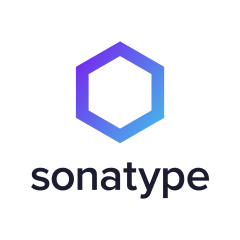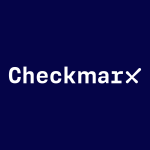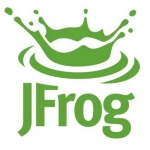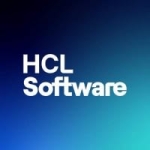What is our primary use case?
We basically use it for open-source vulnerability. It is completely on-premise as of now, but we will be exploring other options.
How has it helped my organization?
IQ Server is part of BT's central DevOps platform, which is basically the entire DevOps CI/CD platform. IQ Server is a part of it covering the security vulnerability area. We have also made it available for our developers as a plugin on IDE. These integrations are good, simplistic, and straightforward. It is easy to integrate with IQ Server and easy to fetch those results while being built and push them onto a Jenkins board. My impression of such integrations has been quite good. I have heard good reviews from my engineers about how the plugins that are there work on IDE.
It basically helps us in identifying open-source vulnerabilities. This is the only tool we have in our portfolio that does this. There are no alternatives. So, it is quite critical for us. Whatever strength Nexus IQ has is the strength that BT has against any open-source vulnerabilities that might exist in our code.
The data that IQ generates around the vulnerabilities and the way it is distributed across different severities is definitely helpful. It does tell us what decision to make in terms of what should be skipped and what should be worked upon. So, there are absolutely no issues there.
We use both Nexus Repository and Lifecycle, and every open-source dependency after being approved across gets added onto our central repository from which developers can access anything. When they are requesting an open-source component, product, or DLL, it has to go through the IQ scan before it can be added to the repo. Basically, in BT, at the first door itself, we try to keep all vulnerabilities away. Of course, there would be scenarios where you make a change and approve something, but the DLL becomes vulnerable. In later stages also, it can get flagged very easily. The flag reaches the repo very soon, and an automated system removes it or disables it from developers being able to use it. That's the perfect example of integration, and how we are forcing these policies so that we stay as good as we can.
We are using Lifecycle in our software supply chain. It is a part of our platform, and any software that we create has to pass through the platform, So, it is a part of our software supply chain.
What is most valuable?
Its engine itself is most valuable in terms of the way it calculates and decides whether a security vulnerability exists or not. That's the most important thing. Its security is also pretty good, and its listing about the severities is also good.
The plugins that are there on the editor are also valuable. Engineers don't have to wait for the entire pipeline to go in and show some results. While they are writing code, it can stop them from writing something that might end up as a security vulnerability.
Its default policies and the policy engine are quite good. So far, we haven't found anything that went through IQ but wasn't caught. We are quite happy with it. The policy engine pretty much provides the flexibility that we need. I haven't seen a case where any of my customers came in and said that they don't have a certain policy in place for IQ, or they wanted to change or remove any policies. At times, they wanted to suppress warnings or altogether skip them if possible, but it doesn't happen or is required very often.
What needs improvement?
One area of improvement, about which I have spoken to the Sonatype architect a while ago, is related to the installation. We still have an installation on Linux machines. The installation should move to EKS or Kubernetes so that we can do rollover updates, and we don't have to take the service down. My primary focus is to have at least triple line availability of my tools, which gives me a very small window to update my tools, including IQ. Not having them on Kubernetes means that every time we are performing an upgrade, there is downtime. It impacts the 0.1% allocated downtime that we are allowed to have, which becomes a challenge. So, if there is Kubernetes installation, it would be much easier. That's one thing that definitely needs to be improved.
Some of our engineers came from outside of BT, and there are some features that they are used to from rival products, but they are currently not there in Sonatype IQ. For example, Snyk has a feature to stop a particular check-in from happening at the merge stage in case something is different or wrong. This feature is still in the development phase in IQ. Such a feature would be handy in IQ.
Another area where Nexus can severely improve is the licensing model. I am not worried about the licensing cost, but the way they calculate the number of licenses being used needs to be improved. They have been quite ambiguous in terms of how they calculate who is using Nexus or IQ, and this ambiguity has not been good. At times, we think we have a certain number of customers, but Sonatype says that it is not true, and we have some other number. They haven't been able to explain very well how they calculate that number, which has been a challenge for us.
For how long have I used the solution?
BT has been using Nexus solutions for almost three years. I myself have been associated with Nexus for two years since I joined BT.
What do I think about the stability of the solution?
IQ Server is quite stable. I get a report from my team about the availability of my tools, and IQ Server stands pretty great. Its stability is 99.99% for sure.
Repo has had some challenges with our setup. I'm not sure if that has to do with Repo itself or our own infrastructure. There have been some challenges, but there is nothing noticeable. So, overall, they have been quite good. The only thing is that whenever we have to update the tool, there has to be mandatory downtime, which I would like to avoid with something like a Kubernetes-based system.
What do I think about the scalability of the solution?
I haven't faced any challenges in the scalability of Nexus solutions. We have gone from pretty minimal usage to pretty high usage, and I haven't seen any challenges. It is good. It is not similar to some of the other tools that I have where scalability has been an issue.
We have around 3,000 to 4,000 engineers who use Repo daily. We have around 1,000 to 2,000 users who use IQ Server. Our usage is moderate. It is not extremely heavy. As compared to the other tools that are being used by around 30,000 engineers, the usage of Nexus is not heavy. It is moderate.
How are customer service and technical support?
My team works more closely with them, but I do get feedback from them. I have worked with their architect, Sola, multiple times, and I can easily rate him a nine out of 10. He has been pretty good. The architecture that he provided has been crystal clear around what we have here in BT. Whenever there was a problem with Nexus Repo, he came to the rescue. He understood what the problem was and could fairly quickly implement it. It provided more help than support. We were trying to scale Nexus to a certain extent, and he was able to assist us quite well. The only area where I felt I did not get what I needed was related to licensing. They have been quite ambiguous in terms of how they calculate the number of licenses, and even he couldn't clearly tell me how the calculations are done. Other than that, he has been fantastic.
How was the initial setup?
Its initial setup was done by someone who is retired now. He did it five or six months before I joined.
For its maintenance, we have a team of three people. We have one SME and two support engineers who are dedicatedly there for Nexus and any services that we do through Nexus.
What was our ROI?
Our ROI is moderate. It has definitely helped us in avoiding a lot of security miscues., but the adoption of IQ hasn't been as much as I would have liked. It has nothing to do with Sonatype. It has more to do with BT's culture and BT's engineers adopting it.
What's my experience with pricing, setup cost, and licensing?
Given the number of users we have, it is one of the most expensive tools in our portfolio, which includes some real heavy-duty tools such as GitLab, Jira, etc. It is definitely a bit on the expensive side, and the ambiguity in how the licenses are calculated adds to the cost as well. If there is a better understanding of how the licenses are being calculated, there would be a better agreement between the two parties, and the cost might also be a little less.
There is no extra cost from Sonatype. There is an operational cost on the BT side in terms of resources, etc.
Which other solutions did I evaluate?
We have evaluated Snyk but not for the same capabilities that IQ has. We didn't evaluate Snyk for open-source vulnerabilities. We evaluated it for container security, Infrastructure as Code security, and other aspects. Snyk does OSS as well, but we are not looking at OSS as a solution offering from Snyk at this time. We are doing a pilot with Snyk to see how they can do other things.
In terms of the open-source vulnerability checks, Snyk has a few more features around stopping mergers to happen and stopping check-ins to happen with integration with Git. This is not something that we have evaluated. It came as feedback from our engineers.
What other advice do I have?
It is quite easy to integrate across the tooling board, but that it does lack a couple of modern and shiny features. It does a pretty good job around the core things of open-source vulnerability check, and it categorizes vulnerabilities pretty nicely. To anybody who wants to use Nexus, I would advise seeing how they can create a bit of a scalable and multi-instance model between IQ and Repo so that they can save on some of the update time that I have to go through.
It has delayed some of the deployments across our supply chain, which is not necessarily a bad thing because delay is only in the case it identifies any issues. One of the challenges in terms of adoption has been that not everybody wants to know how bad their code is. It has been a challenge to make more and more people adopt Nexus IQ, but the quality has definitely improved for those who have onboarded it. There is no doubt about that.
In terms of the reduction in the time taken to release secure apps to market, it doesn't improve the time if you look at a small picture and a single pipeline or component. It reduces time if you look at the larger picture in terms of how many cycles would have been there if you had identified a security vulnerability in the final environment rather than the earlier environment. In such a scenario, it saves time. It doesn't save time in making the code reach production quicker, but it saves time with fewer cycles happening between the development code and the production code. If I go completely by the test count or the engineering count of around 2,000 folks, there is definitely a saving of around 4,000 to 5,000 hours every quarter.
It has not increased the level of productivity for our developers because that's not why we are using Nexus. It has definitely reduced the number of cycles between the production code and the development code.
We don't use the Nexus Container feature. We have a different container that is our own instance. It is a strategic instance for BT that is owned by our own team.
Nexus definitely has been a key component in our portfolio. The big lesson that I have learned from using Nexus is that there are a lot of open-source libraries that are considered okay in a common area. A lot of times, we identified a library that almost everybody considers okay to use but then realized its vulnerability. So, one of the lessons is that you have to be vigilant all the time with what you are using inside your code.
I would rate it an eight out of 10, and that's quite good. I have deducted two points. One of them is related to the licensing model, which should not be that ambiguous. Another one is related to becoming more forward-looking and supporting modern products such as Kubernetes or EKS. The demand of the hour is to have our services up for more than four-nines or five-nines.
Which deployment model are you using for this solution?
On-premises
Disclosure: PeerSpot contacted the reviewer to collect the review and to validate authenticity. The reviewer was referred by the vendor, but the review is not subject to editing or approval by the vendor.




















